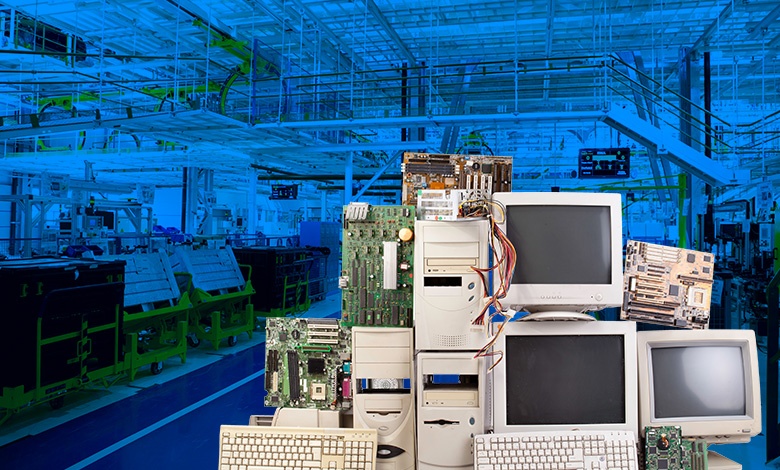For most of my career, I watched a disturbing but common trend: the factory “hand-me-down.” It’s the act of taking older devices from engineers or higher-paid salary employees and passing them down into the factory to replace factory computers. I’m not sure about you, but I wasn’t particularly excited about receiving hand-me-downs from my older brother, so why would valued factory workers want an outdated, slower, and less capable computer in the factory? And how does this create a more attractive and productive place to work?
Another sad but realistic perception associated with hand-me-downs is what it says about how a company values its workforce. To a particular workforce population, we provide the latest and greatest devices to get the job done, but for this other group, we provide old equipment no longer suitable for use. Let that sink in for a moment, and consider how you might feel or how this and many other job frustrations might add up to a reason for underperformance or high turnover.
Yes. It’s true that a design and simulation engineer requires different equipment, and that equipment multiple years later might be better than the clunky ten-year-old computer used on the factory floor. Or that same computer might help IT solve a looming Windows end-of-support deadline.
But is that hand-me-down computer right for factory operations and those dependent on it?
Today’s Factories Demand Better Devices
Smart manufacturing is about many things, including optimizing the entire value chain and deploying technologies that generate a more agile, efficient, and productive organization. As organizations shift to more digitally connected solutions, including automation, there remains a need for a frontline workforce that will depend upon endpoints to perform their job responsibilities in the factory.
Manufacturers are deploying or upgrading new ERP, MES, automation, and business Intelligence applications at their fastest pace in years. Because of this, it’s even more critical to avoid hand-me-downs. The experiment of placing devices in the factory is over—technology has won and is being adopted everywhere. It’s time that manufacturers shed their past view of manufacturing technology and demand more powerful and better fitting devices for how the factory operates.
Opportunities to Improve Productivity and Outcomes
Besides the human component of this long-standing practice, I would like to challenge you with the more considerable missed opportunities at stake. First, the modern factory workforce has many responsibilities that didn’t previously exist. With so much disruption in the factory, shouldn’t our endpoint strategy change too? I would argue yes. Hand-me-downs are less capable, resulting in slower transactions, complacency, and dissatisfaction. Outdated equipment will impact major business systems’ adoption and rollouts, slow employees in everyday tasks, and ultimately affect productivity. In the worst cases, we’ve observed process abandonment or the act of employees ignoring processes, data collections, traceability, or other required tasks in response to poor technology.
Second, while a hand-me-down may have lots of computing power, it may not be a well-suited device for the environment. Office devices are not always well suited for factory work. The first challenge we often hear about is the way employees must work. Factory workers may require more flexible and fit-for-purpose devices that optimize the way they work in the factory. For example, a typical office worker might sit at a desk for hours. In contrast, a factory worker might require wildly different mounting, mobility, and accessories to optimize their ergonomics and workflow. This can be even more compelling in harsh environments with extreme temperatures, particulates, chemicals, liquids, food, drugs, or regulatory requirements concerning safety, sanitization, hazard locations, or other conditions that require uniquely fitting solutions.
Lastly, we need to take into consideration the total ownership cost. IT often ignores the unique requirements and challenges arising from not using the proper fitting equipment that is explicitly built for the environment and lifecycle. While you may think you’re saving the company money by squeezing another 3–5 years out of an already old computer, think about the total cost of ownership. Considerations include employee productivity, OEM support, next-generation operating system compatibility, life expectancy, and reliability in harsh environments. After all, your factory production depends on these devices—and you can’t just send them to another office desk.
Empower Your Factory Employees
Manufacturers are quickly deploying new responsibilities and technologies into the factory. The workforce that drives your business expects devices that support how they work in the modern world. Using refurbished devices on the factory floor may seem like a great way to save money, but today’s workers need devices optimized for their roles. Don’t sacrifice employee productivity for outdated hand-me-downs.
Connection believes there is a better way to equip your factory workforce. If you’re interested in learning more, engage with a partner that will take the time to understand your business objectives, evolving applications, and smart manufacturing goals and help you select devices that are the right fit for the future of your factory operations.

